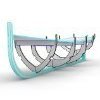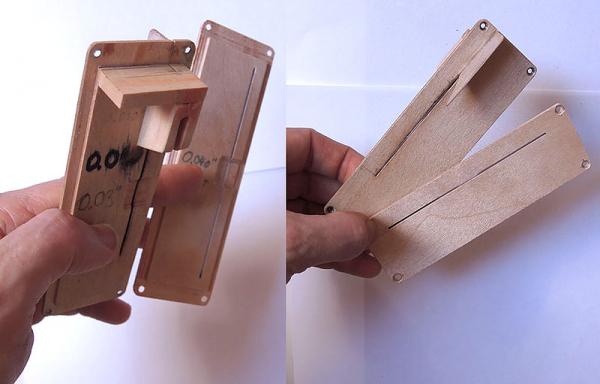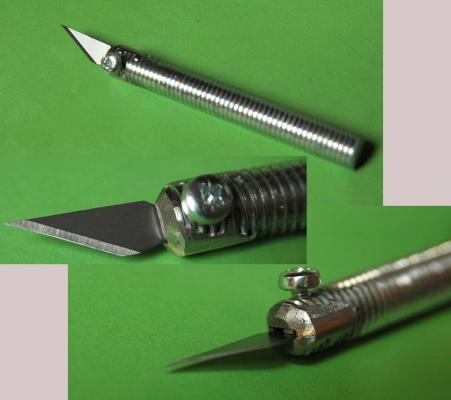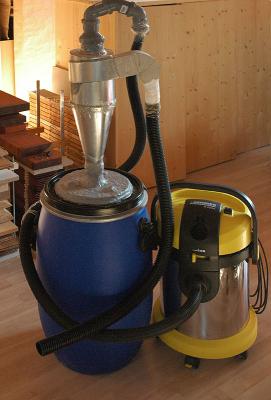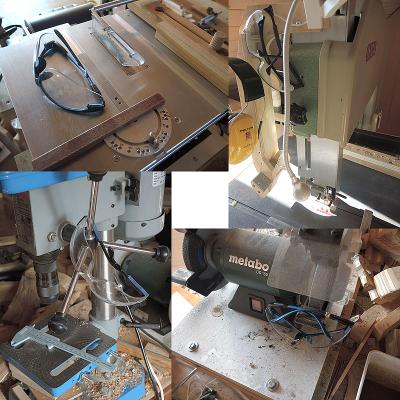-
Posts
55 -
Joined
-
Last visited
Profile Information
-
Gender
Not Telling
Recent Profile Visitors
-
 Sasha131 reacted to a post in a topic:
Can i live without a BYRNES TABLE SAW
Sasha131 reacted to a post in a topic:
Can i live without a BYRNES TABLE SAW
-
 Archi reacted to a post in a topic:
The Byrnes Saw "inside and around"
Archi reacted to a post in a topic:
The Byrnes Saw "inside and around"
-
 Archi reacted to a post in a topic:
The Byrnes Saw "inside and around"
Archi reacted to a post in a topic:
The Byrnes Saw "inside and around"
-
 Archi reacted to a post in a topic:
The Byrnes Saw "inside and around"
Archi reacted to a post in a topic:
The Byrnes Saw "inside and around"
-
 Archi reacted to a post in a topic:
The Byrnes Saw "inside and around"
Archi reacted to a post in a topic:
The Byrnes Saw "inside and around"
-
 Archi reacted to a post in a topic:
The Byrnes Saw "inside and around"
Archi reacted to a post in a topic:
The Byrnes Saw "inside and around"
-
 Archi reacted to a post in a topic:
The Byrnes Saw "inside and around"
Archi reacted to a post in a topic:
The Byrnes Saw "inside and around"
-
 Archi reacted to a post in a topic:
The Byrnes Saw "inside and around"
Archi reacted to a post in a topic:
The Byrnes Saw "inside and around"
-
 Archi reacted to a post in a topic:
The Byrnes Saw "inside and around"
Archi reacted to a post in a topic:
The Byrnes Saw "inside and around"
-
 Ben752 reacted to a post in a topic:
Saw Kick Back
Ben752 reacted to a post in a topic:
Saw Kick Back
-
 nobotch reacted to a post in a topic:
Byrnes Table Saw
nobotch reacted to a post in a topic:
Byrnes Table Saw
-
 nobotch reacted to a post in a topic:
Byrnes Table Saw
nobotch reacted to a post in a topic:
Byrnes Table Saw
-
 nobotch reacted to a post in a topic:
Byrnes Table Saw
nobotch reacted to a post in a topic:
Byrnes Table Saw
-
 nobotch reacted to a post in a topic:
Mini Anvil
nobotch reacted to a post in a topic:
Mini Anvil
-
 nobotch reacted to a post in a topic:
Speaking of Plank Benders - homemade plank bending jig
nobotch reacted to a post in a topic:
Speaking of Plank Benders - homemade plank bending jig
-
 nobotch reacted to a post in a topic:
Proxxon Micro MBS 240/E Band Saw Review
nobotch reacted to a post in a topic:
Proxxon Micro MBS 240/E Band Saw Review
-
 nobotch reacted to a post in a topic:
Tilting Table on Byrnes Saw
nobotch reacted to a post in a topic:
Tilting Table on Byrnes Saw
-
 nobotch reacted to a post in a topic:
Using taper jig on Byrnes table saw
nobotch reacted to a post in a topic:
Using taper jig on Byrnes table saw
-
 nobotch reacted to a post in a topic:
My New Found Respect for Table Saws
nobotch reacted to a post in a topic:
My New Found Respect for Table Saws
-
 nobotch reacted to a post in a topic:
Proxxon Micro MBS 240/E Band Saw Review
nobotch reacted to a post in a topic:
Proxxon Micro MBS 240/E Band Saw Review
-
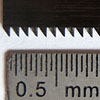
How would you improve your Byrnes tools?
nobotch replied to Keith_W's topic in Modeling tools and Workshop Equipment
Not really. Actually I had asked myself the same question the other way round: any reason I could not or should not use wooden inserts instead of aluminium ones? As I am much more familiar with woodworking than metal working the decision was an easy one. Maybe a metal splitter/anchorage assembly screwed to the insert would be slightly sturdier, but the little bit of additional sturdiness is not necessary. Regarding the wooden inserts: they are as stiff and sturdy as the aluminium ones if you make them of 3mm or thicker birch plywood. This is easy earned money at saving 8$ per insert, especially if you make a batch. I first made one to see how it goes, and then in less than an hour a batch of 10. -

How would you improve your Byrnes tools?
nobotch replied to Keith_W's topic in Modeling tools and Workshop Equipment
It's the first picture in the first post in the thread I linked to. No need to click back to that thread again just for the picture, here it is again: The first one I made of solid mahogany for the plate and thin birch plywood for the splitter. For the next ones (see attached picture) I used 3mm (1/8") birch plywood for the plate which helps to keep the edge near the holes intact. Start by cutting the plate to size, bore and countersink the screw holes before thinning down these borders and before rounding over the corners. As the recess in the table is too thin to receive a stable enough wooden zero clearance plate I used thicker wood (the 3mm ply) and thinned it down where it sits on the aluminium ledge in the table, using the Byrnes saw itself to do so: raise the blade by as much as you need to reduce the plate thickness - there are quite a few cuts to do, start with the innermost ones. Clean up the surfaces with a chisel, knife or scraper. Once the plate fits the recess (it should be perfectly level and drop in nicely without applying any force at all, if it's a bit a loose fit that's fine too) you have to thin down the small zone where the flange would otherwise touch the insert when the blade is all up. Then screw the insert plate in place, align the rip fence over the right edge of the plate so that you will not cut into the fence while now rising the blade with the saw turned on. Now, with the saw unplugged move the fence to the right, remove the four screws and lift the plate slightly with the blade still in the slot you just have cut, and move the fence to the left until it touches the right edge of the insert plate. Secure the fence in this position and replace the wooden insert with the one that came with the saw, then cut open the slot the rear side of the wooden insert. Next, cut out the splitter to the shape it needs to be. Maybe you'd like to first make a cardboard or paper model/template of it to define its shape, it really helps. Don't make the splitter too high because these rather thin splitters would become too flexible over its height. Sand, plane or scrape it to the exact thickness of the kerf your blade makes, screw the insert in place and tack glue the splitter into its correct position it the extended slot. 1mm from the completely raised blade is just fine, don't go too close. When the glue is dry place the insert upside-down into the recess in the table and build up an anchorage around the part of the splitter that will be inside the saw. Be aware of the position of the blade support. When the glue has dried place the insert/splitter in its normal position using the 4 screws, and sand the splitter further down a little bit from each side using a small, square sanding block (240 grit is ok) and a square wooden block to hold against it from the opposite side. In the end the splitter should be about 0.1 - 0.15mm thinner than the saw kerf. I hope I didn't forget anything essential. The whole thing sounds more complicated than it is, but it takes a bit time, patience and 3D imagination to do it. -

How would you improve your Byrnes tools?
nobotch replied to Keith_W's topic in Modeling tools and Workshop Equipment
Some time ago I posted here my own additions and mods I immediately made to the saw after I bought it, and I find them useful, helpful or even necessary every time I use the saw. It takes two screws to remove the fence, which is quick enough for me. What in the pictures may seem to be four other screws are just location pins. A riving knife would be a great thing, but a good one that can quickly be exchanged according to the saw disk used surely would be an expensive solution. I overcame this issue by making my own zero-clearance plates which include a splitter (shown in the thread I linked to above), which works great. Making those plates/splitters involves some precision work but pays off. For ripping I just use two push sticks, one with a notch cut out on one side of its tip so I can hold the work piece down and at the same time against the fence, and the other just plain square to shove the workpiece forward. Edit 2: I use a "short fence" going to less than the middle of the blade, and of course the splitter. This is a quick and easy solution which allowed me to cut dozens of literally meter-long 1mm and 2mm thin strips that turned out to vary considerably less than half a tenth of a millimetre in thickness from end to end. It is important that the square push stick is broad enough to go at least to the blade. It also should be really square as should be the back of the workpiece too. Like this you will be able to shove your stuff straight through the blade without having to reach with a stick between the blade and the fence. For long pieces an outfeed table is essential (mine is also in the thread I linked to in the first line of this post). Edit 1: link fixed -

Is there a better #11 blade handle
nobotch replied to roach101761's topic in Modeling tools and Workshop Equipment
A piece of threaded rod (M12) made a better handle for me. Exactly the right weight and length for my taste. -
Of course they do, why wouldn't they? But there's a catch with the sandpaper method: it is only cheaper if you don't sharpen a lot. Keeping all my plane blades, chisels, gouges and carving knives sharp by using the sandpaper method (aka "scary sharp system") I would spend each year as much for sandpaper as two nice Japanese waterstones cost! Halfways and/or unevenly worn sandpaper does a poor job on sharpening. For "only" sharpening very small blades, and not sharpening many blades several times a week the sandpaper method may be a good option though.
-
May I ask why you only rarely use it? Although I am very happy with the use and results of my sharpening equipment (water stones, diamond plates, guides, truing plates - for that money I almost could have bought the Tormek! LOL) I still would like to know more about the strong and weak points of this WS3000 machine (after all, it "only" costs about the price of another two very nice waterstones or diamond plates, haha).
-
Bill, it looks like you have a very reasonable dustcollection setup. Bigger ducting cross section is goos as long as the blower can keep up delivering a high enough airflow speed in the "fat tubes". I don't think that you can have any overkill at all on dust collection. The big problem with dust is that we only really discover protection is not good enough when it is already too late. Those ambient air filters are a great addition, but they can not replace dust collection right at the machine or even better "at the blade".
-
A well designed cyclone lets about 10% of the smaller than 5 micron sized particles through to the filter. Of course, no dust collection system will deal with the dust it did not capture, regardless if hooking up or not a cyclone between the machinery and the blower / shop vac. This sounds trivial, but picking up the dust right where it has been produced is essential (as close as possible to where the blade tip or sandpaper makes contact with the wood). Since dust collection does not get more efficient than the design of the hood is, there is still o lot of room for improvement there (more openly speaking, it is generally a very poor design. The older, and also the smaller the machine is, the worse the design regarding dust pickup is, Proxxon, Byrnes and similar saws are no exception. Festool claims to have better dust collection but they don't make many (or any) tool really fitted for model making, and I don't know how much better they really are, but they seem to be better designed than other hand held powertools. Also Saw Stop also seems to have done an excellent job there. (I'm not affiliated with any of the mentioned companies). By the way, static discharge igniting dust in a small scale dust collection systems (leave alone a shopvac based system) is one of those dust collection myths (you may want to read this here). And in any case, grounding a PVC pipe is simply not possible, you can put a wire in the tubing but it will have no effect. One real danger of dust ignition though lies in the dust bin, not in the ducting of small scale dust collectors with 6"-ish ducts: when cutting through let's say a nail and the glowing debris lands in the dust bin you'd better not walk away when you believe the job is done. But then again, with small machinery as it gets typically used in model ship building this is very unlikely going to be a point of interest (I don't remember having ever used wood with nails in it when working on small projects).
-

Proxxon Micro MBS 240/E Band Saw Review
nobotch replied to Blue Ensign's topic in Modeling tools and Workshop Equipment
Cheers Mike. I don't know if it makes a difference, but I always have used plain cardboard, not corrugated. However, I'm glad you could achieve some noise reduction with the cardboard fix. I see that you damped the aluminium(?) housing, which certainly is not wrong (I guess you did the same with the door which I believe is made of some kind of plasic). - Markus -
I hook up a self built cyclone separator between the dust/chip prodiuction site and the vacuum. This saves me dust bags (none at all needed) and keeps fine dust filters (if present) from clogging up too quickly. I built my cyclone according to the scaleable plans of Bill Pentz's model (for those interested in building one: it helps a lot to read Bill's build-instructions on his website here and here). Its geometry is well calculated and the cyclone is very effective. But there are also simpler models of separators (less effective, let more fine particles through to the filter), like for example the Thien baffle Matthias Wandel shows here. I took this picture of my cyclone a few years ago. Now the cyclone and the shop vac sit on a plywood board with 4 small swiveling wheels
-
I couldn't agree more. A friend of mine had a near miss using his accu drill. This, and the fact that it bothered me to always had to make two or three steps to grab my goggles when working with another tool were the driving factors for me to do a relatively cheap but very effective upgrade: every stationary powertool has now "its own" goggles, strategically placed in a way that I can't use the tool without moving the goggles "out of the way - onto my nose". I got used to this system very quickly and shed live is now much easier (and a fair bit safer). When using an electric hand drill or a hand powered handdrill with very thin drill bits I reach for the goggles of the next powertool and put them back to their place when done.
-

Proxxon Micro MBS 240/E Band Saw Review
nobotch replied to Blue Ensign's topic in Modeling tools and Workshop Equipment
Hi Mike, I don't have the Proxxon bandsaw, but I have reduced noise on quite a few machines (computers, drill press, cheap scroll saw, and some others) by gluing cardboard sheets (as big as possible) to the inside of the housing or housing parts that act as a resonator. You need the dense variety of cardboard, and it should be thick or you can use two layers if possible. The additional mass of the cardboard is important because it reduces the "vibrational mobility" of the resonator. I normally use epoxy glue on metal and plastic parts. Of course it is also important that the saw's door is firmly closed, without any play. Reading your post you apparently already have hunted down the latter issue, but maybe you still can improve on that one. Cheers, Markus -

Byrnes Table Saw Rip Capacity
nobotch replied to Stefonroman's topic in Modeling tools and Workshop Equipment
Gaetan, The assumption that security had to do with experience is not correct. History proves that experience and "paying attention all the time" does not completely [edit: not even approximately] prevent accidents. Normally they don't happen, even if we make mistakes! But acidentally they do happen, which is why accidents are called accidents. We all make mistakes, also the experienced ones. Also, these small tablesaws have more than enough power to cause serious damage to one or several fingers in a blink of an eye. Even if not cutting off a finger completely (which would be perfectly possible though), an emergency room visit to get done a few stiches will cost consideravbly more than a grade-up to a broader table on the Jim saw, and also would not justify the 30 seconds it takes to remove the fence completely. And by the way, tilting up the fence does not increase rip capability, which is the subject of this thread... However, for crosscutting a crosscut sled is unsurpassed, and you even can leave the original Bryrnes saw guard on when using a well designed sled. Of course you can use your tools the way you want, but if you recommend unsafe procedures you have to accept that someone may show up to correct your statement in order others will become aware of the dodgyness of the procedure in question. - Markus -

Byrnes Table Saw Rip Capacity
nobotch replied to Stefonroman's topic in Modeling tools and Workshop Equipment
Which requires to remove the guard. Not recommendable! -

Byrnes Table Saw Rip Capacity
nobotch replied to Stefonroman's topic in Modeling tools and Workshop Equipment
Hi Stefon, Good question! The maximum distance between the blade and the rip fence is about 97 mm (with no micrometer mounted). If this is not enough for your purposes you can ask Jim to make you one with a broader table to your specifications, for example like this one the amazing and charming team of Beatty Robotics uses. Cheers, Markus
About us
Modelshipworld - Advancing Ship Modeling through Research
SSL Secured
Your security is important for us so this Website is SSL-Secured
NRG Mailing Address
Nautical Research Guild
237 South Lincoln Street
Westmont IL, 60559-1917
Model Ship World ® and the MSW logo are Registered Trademarks, and belong to the Nautical Research Guild (United States Patent and Trademark Office: No. 6,929,264 & No. 6,929,274, registered Dec. 20, 2022)
Helpful Links
About the NRG
If you enjoy building ship models that are historically accurate as well as beautiful, then The Nautical Research Guild (NRG) is just right for you.
The Guild is a non-profit educational organization whose mission is to “Advance Ship Modeling Through Research”. We provide support to our members in their efforts to raise the quality of their model ships.
The Nautical Research Guild has published our world-renowned quarterly magazine, The Nautical Research Journal, since 1955. The pages of the Journal are full of articles by accomplished ship modelers who show you how they create those exquisite details on their models, and by maritime historians who show you the correct details to build. The Journal is available in both print and digital editions. Go to the NRG web site (www.thenrg.org) to download a complimentary digital copy of the Journal. The NRG also publishes plan sets, books and compilations of back issues of the Journal and the former Ships in Scale and Model Ship Builder magazines.



